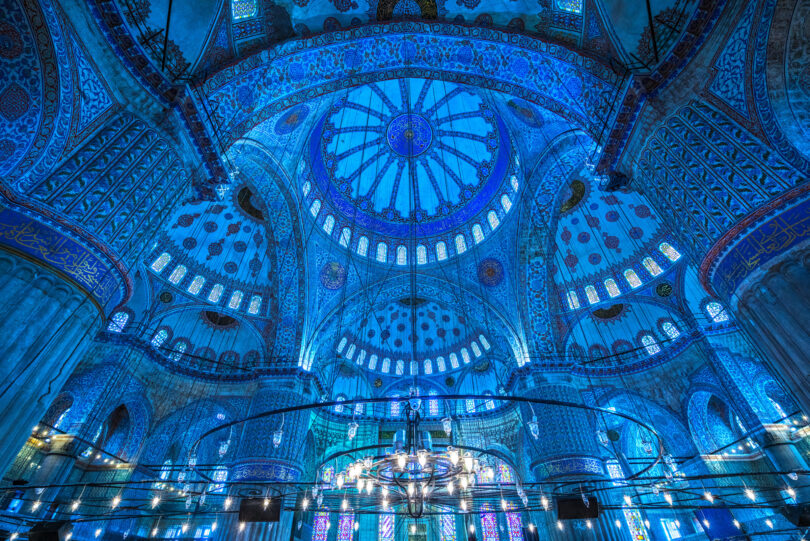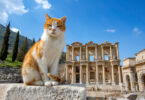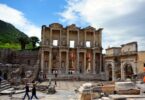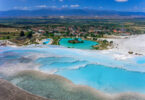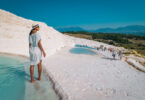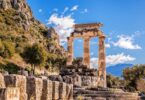Embark on a fascinating journey through the heart of Istanbul, exploring the city’s most iconic landmarks: the Blue Mosque and Hagia Sophia. Experience the magic of Sultanahmet and the Hippodrome, as you immerse yourself in the captivating history of these magnificent structures.
Small-Group Tour Overview
- Duration: 3 hours
- Live tour guide: English, German
- Private group available
- Free cancellation up to 24 hours in advance for a full refund
- Reserve now & pay later
Highlights of the Tour
- Marvel at the Islamic architecture of the Blue Mosque
- Discover the beauty and history of Hagia Sophia
- Learn about the Ottoman and Byzantine Empires
- Experience the vibrant local life of Istanbul
- Explore the Hippodrome and its significance in the city’s social and political life
Book Now
Blue Mosque: A Masterpiece of Islamic Architecture
Begin your journey at the Blue Mosque, Istanbul’s most visited monument, renowned for its exquisite blue tiles. The Blue Mosque is a prime example of the grandeur and elegance of Ottoman architecture. It showcases the pinnacle of the empire’s artistic and architectural achievements, reflecting the wealth, power, and cultural sophistication of the Ottomans during their zenith.
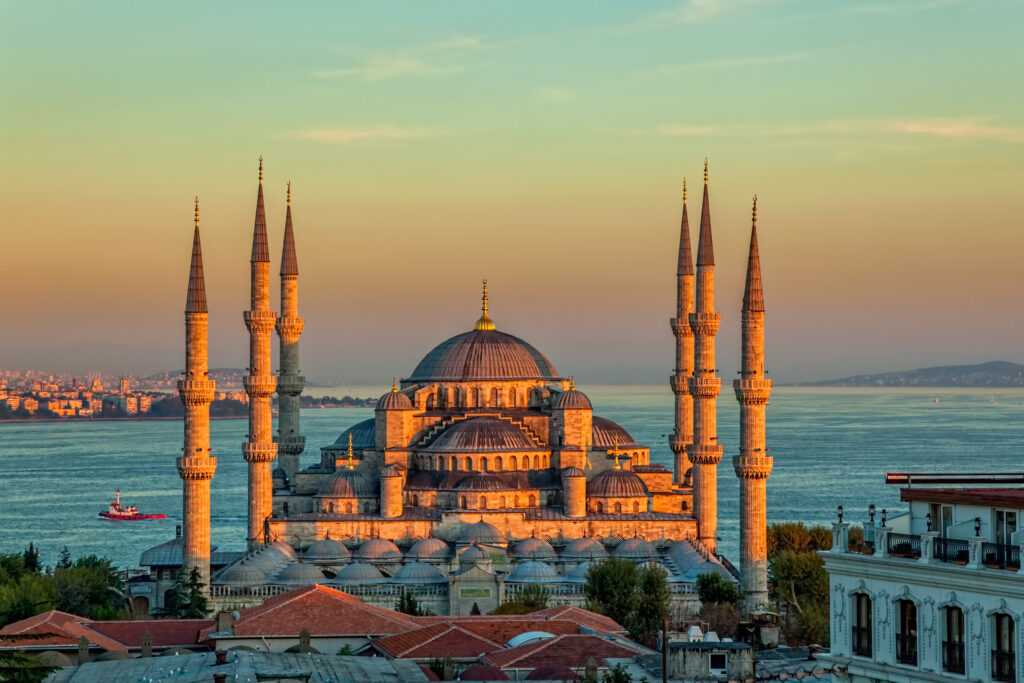
Blue Mosque and Hagia Sophia Small-Group Tour
The Blue Mosque, also known as the Sultan Ahmet Mosque, is an iconic symbol of Istanbul and a masterpiece of Ottoman architecture. This historical site is renowned for its stunning blue İznik tiles, which give the mosque its distinctive name. The Blue Mosque was built between 1609 and 1616 during the reign of Sultan Ahmet I. The mosque was designed by the renowned architect Sedefkâr Mehmed Ağa, a student of the great Mimar Sinan. The construction of the mosque was a grand project to showcase the wealth and power of the Ottoman Empire.
Sultan Ahmet I, the 14th Ottoman ruler, was a pious and ambitious leader. He commissioned the construction of the Blue Mosque to rival the beauty of the Hagia Sophia, a nearby Byzantine church that had been converted into a mosque after the conquest of Constantinople.
The Blue Mosque is a stunning example of classical Ottoman architecture. Its exterior features a cascading arrangement of domes, semi-domes, and six slender minarets, which are unique to the mosque. The main dome is supported by four massive columns, creating an impressive visual impact. The interior of the Blue Mosque is adorned with over 20,000 handmade İznik tiles in varying shades of blue. These tiles, featuring intricate floral patterns, are the primary reason for the mosque’s nickname. The mosque’s stained glass windows allow for a soft, diffused light to enter the space, creating a serene atmosphere for worship.
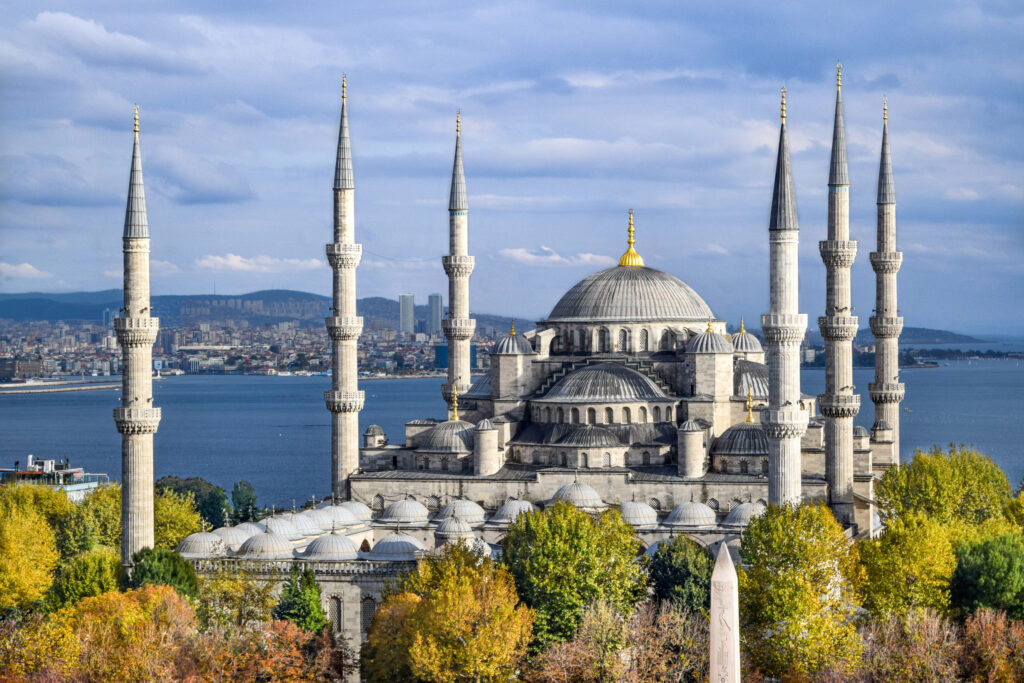
Blue Mosque and Hagia Sophia Small-Group Tour
The Blue Mosque features a spacious courtyard, surrounded by a colonnade of 30 domed bays. The courtyard’s centerpiece is a beautiful ablution fountain, used by worshipers for ritual cleansing before prayers. Take a moment to wander through the courtyard, soaking in the breathtaking views of modern Istanbul while observing the locals going about their daily lives.
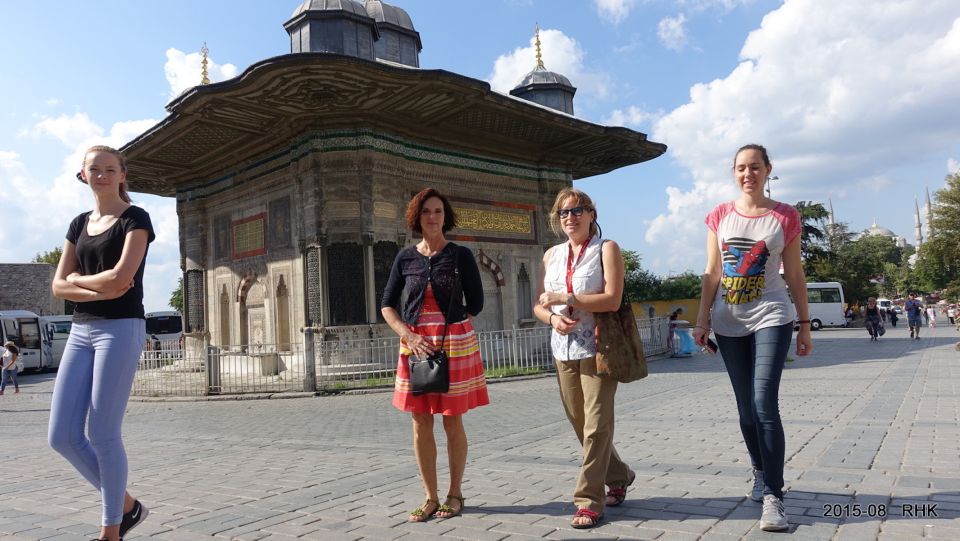
Blue Mosque & Hagia Sophia Small-Group Tour
Hippodrome: The Heart of Istanbul’s Social and Political Life
Stroll through the historic Hippodrome, once the center of social and political life in Istanbul. Learn about the importance of the famous obelisks and delve into the stories of chariot races, gladiator fights, and political uprisings that took place here.
The Hippodrome of Constantinople was an ancient stadium that played a vital role in the social and political life of the Byzantine Empire’s capital. It was a place where people could enjoy thrilling chariot races, witness grand imperial ceremonies, and participate in various public events. In this article, we’ll explore the rich history of the Hippodrome, its architectural design, and its legacy in modern-day Istanbul.
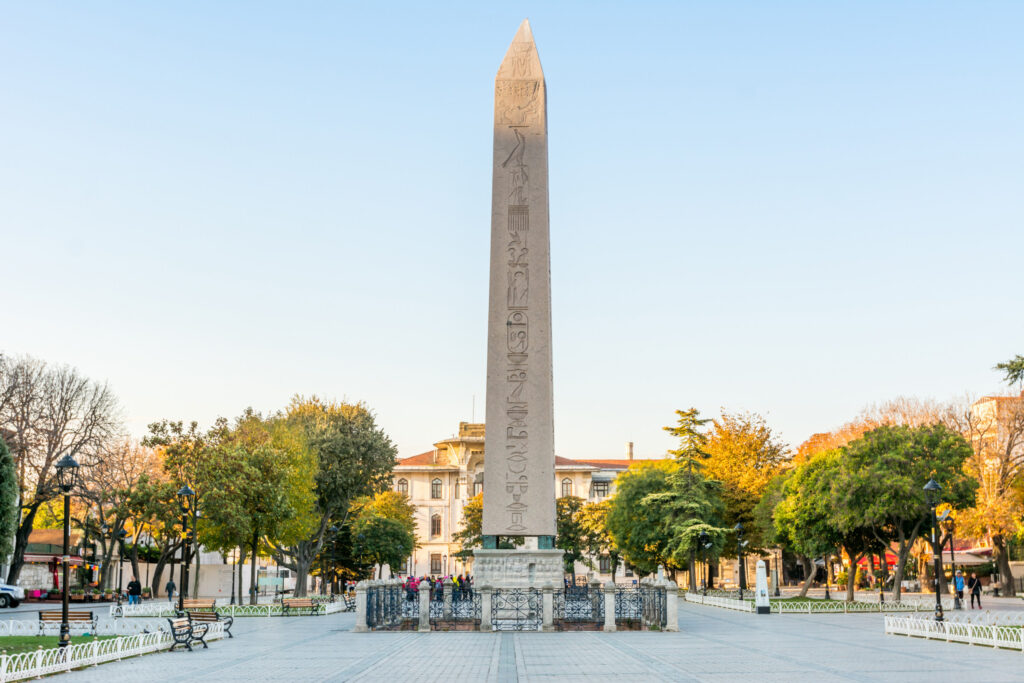
Blue Mosque and Hagia Sophia Small-Group Tour
The origins of the Hippodrome date back to the reign of Emperor Septimius Severus in the 3rd century CE, who constructed a stadium on the site to entertain the citizens of Byzantium. Later, Emperor Constantine the Great significantly expanded the stadium in the 4th century, transforming it into the grand Hippodrome of Constantinople, the center of public life for the new capital of the Roman Empire.
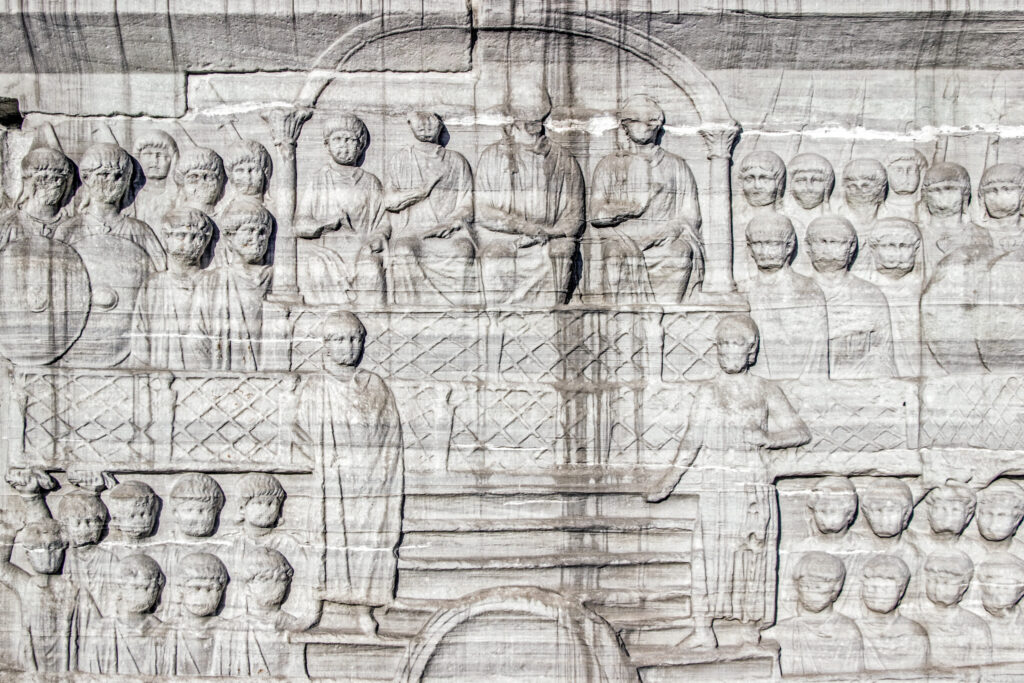
Blue Mosque and Hagia Sophia Small-Group Tour
Throughout the Byzantine era, the Hippodrome was a focal point for both entertainment and political power struggles. Emperors lavished resources on the chariot races and other spectacles, using them to garner public support and distract the populace from political issues. The Hippodrome continued to be an essential part of Constantinople’s social life until the city’s conquest by the Ottomans in 1453.
Under Ottoman rule, the Hippodrome lost its significance as a sporting venue, but its monuments were preserved and even incorporated into the new city plan. The area surrounding the Hippodrome became a gathering place for public events and ceremonies, including parades and festivals.
Hagia Sophia: A Symbol of Istanbul’s Rich History
Next, visit the world-famous Hagia Sophia, an architectural marvel that once served as the most important site of the Greek Orthodox religion in Istanbul. Discover how it was converted into a mosque after the Ottoman conquest of Constantinople, and marvel at the unique fusion of mosque and church elements.
Admire the Hagia Sophia’s awe-inspiring dome, minarets, mosaics, paintings, and Roman columns. Learn about the addition of İznik tiles over time, the creation of the stunning Virgin Mary mosaic, and the reasons behind the Ottomans choosing to bury their sultans in the courtyard.
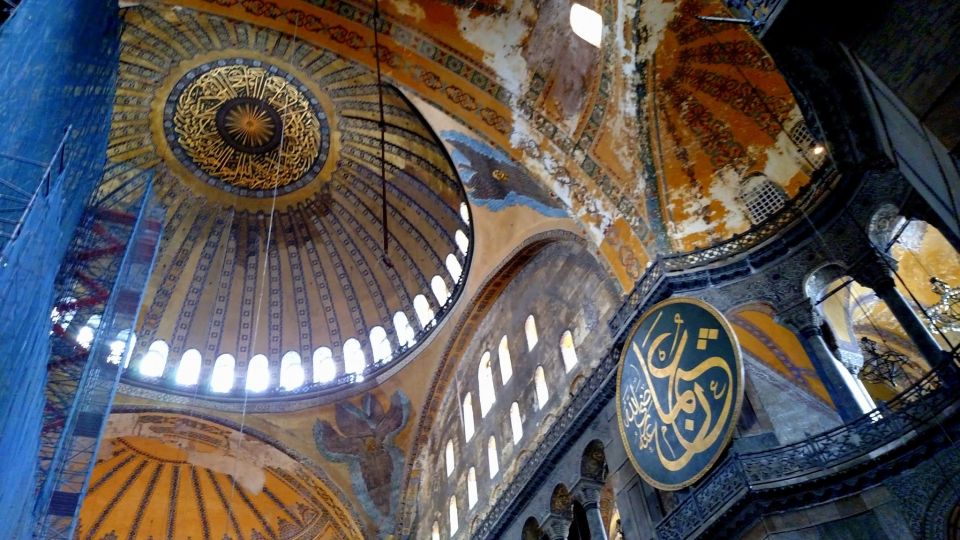
Blue Mosque & Hagia Sophia Small-Group Tour
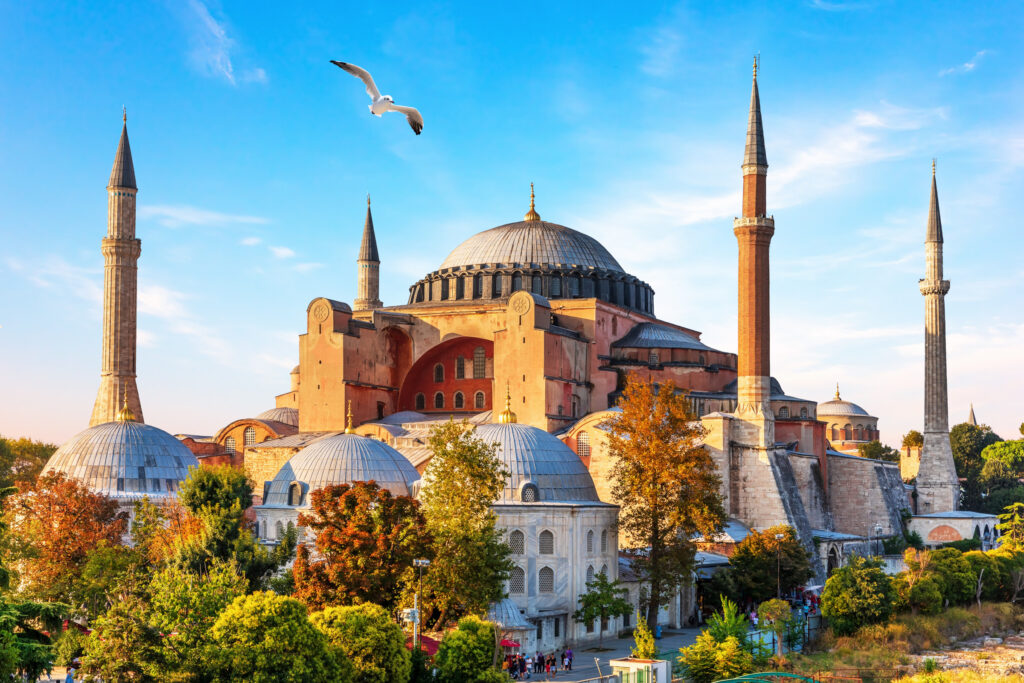
Blue Mosque and Hagia Sophia Small-Group Tour
Arasta Bazaar: A Glimpse of 17th Century Architecture
Conclude your tour with a visit to the Arasta Bazaar, a hidden gem nestled in the shadow of the Blue Mosque. This modest open-air market in the heart of Sultanahmet offers a glimpse into the 17th-century architecture of public buildings. Enjoy a relaxing tea break and hunt for unique souvenirs to take home.
Independent Exploration
End your small-group tour in Sultanahmet Square, equipped with insider knowledge and tips from your guide to help you navigate the rest of your time in Istanbul independently.
Inclusions
- Shared or private walking tour (depending on the option selected)
- Professional local guide
- Blue Mosque and Hagia Sophia tour
- Port pickup for cruise ship passengers (only if ship details provided)
- Transportation to the meeting spot
- Lunch (not included)
Important Information
- All visitors must pass through airport-style security
- Shoes must be removed before entering both landmarks
- No skipping lines at the mosques, but guides will attempt to make entry easier for groups
- Entry into Hagia Sophia is not guaranteed due to long lines
- Istanbul is known for traffic congestion, so please plan accordingly
- Women must carry a headscarf when visiting the mosques


